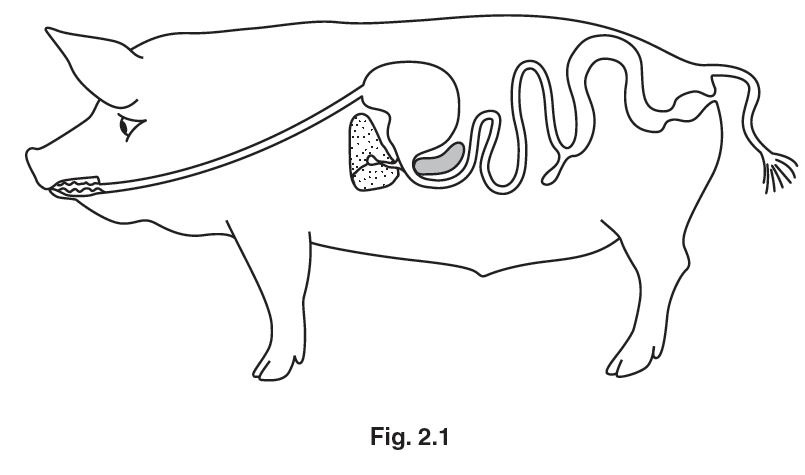2023 NECO Agric Science Questions & Answers Released.
The Neco agricultural science 2023 answers expo has been made available here. Candidates will write the National Examination Council (NECO) Agric examination on Wednesday 19th July 2023 starting at 10:00 am.
The NECO agric answer 2023 exam will last for 2hrs 30mins and will comprise Paper III & II (Objective & Essay).
Here, we will be posting the Neco agriculture questions for candidates that will participate in the examination. Note that below is the questions from Neco agric past questions and answers that we feel are likely questions for Neco agric exam preparation.

NECO Agric Answers 2023 Questions.
Section II [Essay]
Answer any FIVE questions.
Write your answers on the answer booklet provided.
1. (a) (i) Explain the term agriculture.
(ii) List three industries that utilize cereals as their raw materials.
(b) Outline six problems that hinder the attainment of self-sufficiency in food production in West Africa.
(c) Enumerate five benefits of commercial farming.
2. (a) Give seven reasons for keeping farm animals.
(b) Classify cattle, goat, rabbit, horse, donkey, pig, snail, and honeybee into:
(i) Ruminants;
(ii) Non ruminants.
3. (a) Explain the term farm mechanization.
(b) List six limitations of farm mechanization in West Africa.
(c) Suggest eight possible ways of encouraging the use of farm mechanization to improve agricultural production in West Africa.
4. (a) List two sources of carbon dioxide in the atmosphere.
(b) State (i) four causes of soil acidity;
(ii) two ways by which soil pH influences crop growth.
(c) List three ways by which each of the following biotic factors affects agricultural production:
(i) parasites;
(ii) soil organisms.
(d) State two advantages of zero tillage.
5. (a) (i) Explain the term drainage.
(ii) State four ways by which drainage is important in agriculture.
(b) (i) List two methods of drainage.
(ii) State two advantages and two disadvantages of each method you listed in 5(b)(i)
6. (a) What are ornamental plants?
(b) List five factors that influence the choice of a crop nursery site.
(c) Give two examples of each of the following methods of weed control:
(i) Physical method;
(ii) biological method;
(iii) cultural method.
(d) Give three functions of potassium in crops.
7. (a) State four advantages of grafting.
(b) Mention four ways by which forests enhance soil conservation.
(c) State two forestry regulations in your country.
(d) In an afforestation programme, teak seedlings were planted at 4m x 4m. After transplanting, 10.5% of the seedlings were lost to stress. Before harvesting, an additional 12.8% were lost to wind damage. Calculate:
(i) the number of teak seedlings required to plant 2.3 hectares of farmland;
(ii) the number of teak seedlings lost to stress;
(iii) the number of teak stands harvested.
8. (a) What is fish farming?
(b) Define the following terms as used in fish farming:
(i) stocking rate;
(ii) fingerlings;
(iii) polyculture;
(iv) fishing gears.
(c) List four factors that influence the water requirements of farm animals.
(d) Discuss foot-and-mouth disease under the following headings:
(i) causal agent;
(ii) symptoms;
(iii) control.
9. (a) Draw and label the digestive system of a ruminant animal.
(b) Describe the process of digestion in the ruminant animal.
10. (a) (i) List the four factors of agricultural production.
(ii) State the reward for each factor you have listed in 10(a)(i).
(b) Outline three functions of the wholesaler in agricultural marketing.
(c) State two objectives of agricultural extension.
(d) Mention five examples of group extension teaching methods.
Keep following this page as more questions will be added soon.

Can I get answers
Please is this group on WhatsApp or telegram??
Please send me agric answer today
Please send me the agricultural science answers today own
Is this really 2021 neco gce Agric questions??
Yes
Thanks
Pls what about the answers
Thanks for today’s work civic education
hmmmmmmmm😂😂😂
Lets hope diz is right
😀😀
Thank
Thanks very much for yesterday work, Civic education
Hmmm i dnt trust dix
Are these 2021questions?
Please I needed to be sure
OK but why not all is not correct
I am well bide how this site is well rapidly giving out question impressed me well.
Hmmmm
Hmmm
Wow
I pity you a lot. Some of these questions are not usually 💯 accurate, so don’t focus much on what is listed here
Some of the questions listed here usually come out so if you know what is good use this guide for your revisions. Remember I said some, not all.
How do you know